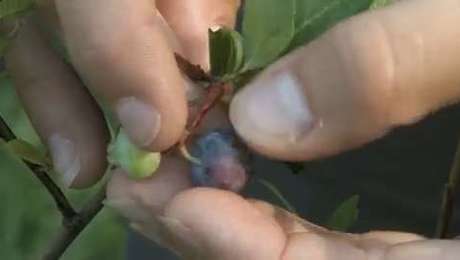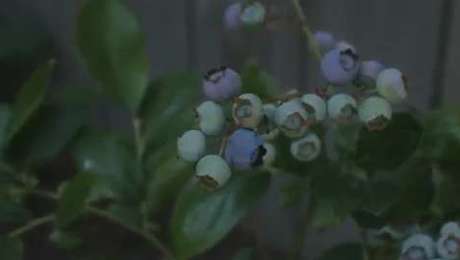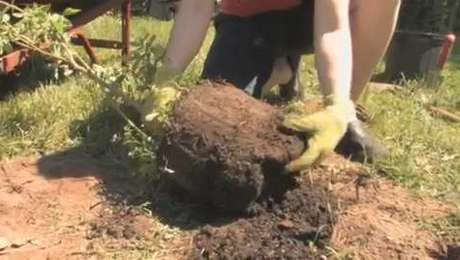Welcome to Homegrown/Homemade, a video series from FineGardening.com and our sister site FineCooking.com. We’ll be following a gardener (Danielle Sherry) and a cook (Sarah Breckenridge) as they plant, maintain, harvest, store, and prepare food crops. Now that the peas, arugula, and potatoes are planted, they turn their attention to blueberries.
Episode 4: How to Preserve and Store Blueberries: Blueberry Compote
You can preserve blueberries by freezing them. Spread them out on a baking sheet covered with parchment paper, then transfer them to a freezer bag after they freeze solid. No blanching is required. A second way to preserve berries is dehydrating. To dehydrate berries, blanch them briefly in boiling water for about 30 seconds, then dehydrate for about 22 hours. A third way is to prepare a quick refrigerator jam, or compote. Cook the berries 7 or 8 minutes with raw sugar, crème de cassis, lemon juice, and cinnamon. Cool the mixture, then store in the fridge for up to a week. Compote can be used on ice cream, waffles, pancakes, or pound cake. You can also make berry tarts by spooning the mix into pre-baked tart shells. If you’re feeling decadent, make Blueberry Fool by folding the mixture into whipped cream.
Get the full Blueberry Compote recipe on FineCooking.com
Recipe: Blueberry Galette
A galette is a quick-to-make rustic pie. Make the crust first (a stand mixer helps), then mold into a round and chill for about 20 minutes to make it easier to handle. Next, roll out the dough into a 13- or 14-inch-diameter circle. Chill again while you prepare the filling: blueberries, sugar, honey, flour, lemon zest, and salt. Spread the filling in the middle of the pastry circle, then fold up the sides. Brush the pastry with egg wash and sprinkle sugar over the top. Bake for about 55 minutes at 350°F.
Episode 1: How to Plant Blueberries
Unlike typical garden crops, blueberries are perennial shrubs, and once they mature, they will grow and produce fruit each season. They are valuable landscape plants as well: In spring, they are covered with white blooms, berries ripen in summer, and the leaves turn red in the fall.
Plant blueberries at least 4 feet apart, to allow them space to grow. Dig a hole at least twice as wide as the root ball, but no deeper than the container the shrub is in. After setting the shrub in the hole, backfill with a mix of peat moss and topsoil. Blueberries thrive in acidic soil, and the peat moss (or a sprinkling of sulfur) will keep the pH at the proper level. Then mulch, and water frequently until the plants establish themselves.
Episode 2: How to Care for Blueberries
Give newly planted blueberry bushes a few weeks to get over transplant shock, then offer them a side dressing of fertilizer formulated for acid-loving plants. Spread the fertilizer in a shallow trench 18 inches away from the crown, cover, and water well. As the berries form, watch for the first sign of ripening: a blue tinge. That’s the time to set out netting to protect your crop from birds.
Episode 3: How to Harvest Blueberries
The trickiest part of harvesting blueberries is knowing when they are at peak ripeness. Look closely at each berry; if it still looks reddish, it isn’t quite ready. Ripe berries are uniformly blue and plump. Shrunken or shriveled fruit is a sign of mummyberry, a fungal disease. Remove and dispose of affected berries, then mulch in the fall to cover any diseased fruit that has fallen to the ground. Blueberry bushes younger than three years don’t need pruning. For older plants, cut one to three of the oldest canes back to the ground. Fruit is produced on younger shoots.


















Comments
Log in or create an account to post a comment.
Sign up Log in